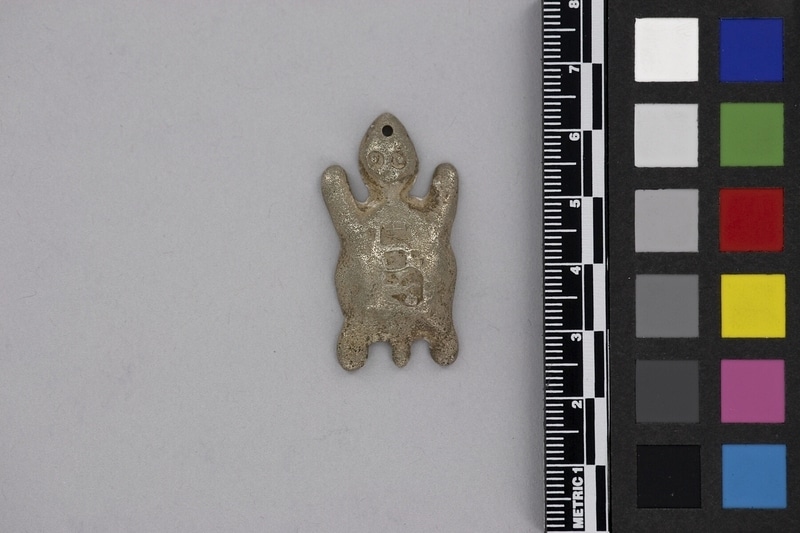Turtle Pendant Item Number: 1590/53 from the MOA: University of British Columbia

Description
Solid silver turtle with pierced nose; stamped with three marks in separate cartouches.
History Of Use
Initially, the main sources of silver were British, French, and Spanish coins. Most ornaments were produced by silversmiths of European origin in North America and Europe. By the mid-18th century silver objects were produced in New England, Quebec and Montreal. Silver ornaments continue to be produced by native silversmiths in Central Canada and the USA. Animal imagery is a significant part of Woodland First Nations tradition, but no documented instance has been found of the use of animal effigies in trade. The place of effigies in Woodlands culture is not known.
In 1670 King Charles II of England granted an exclusive fur trading charter to the Hudson's Bay Company in what was later to become Canada. The company's mandate was to protect the crown's interests and undertake exploration and territorial expansion. Competition for furs was intense, and in 1784 the North West Company was formed by a number of independent trading groups. By 1821 this company faced bankruptcy and merged with the Hudson's Bay Company. This latter company still exists today, operating a number of retail stores across Canada, and is known simply as The Bay.
Iconographic Meaning
The Iroquois legend of the turtle explains that the earth was formed from a lump of mud on the turtle's back. See Frederickson, page 59.
Cultural Context
personal ornamentation
Item History
- Made by Louis Jackson (Maker) in Montreal, Quebec, Canada between 1752 and 1821
- Owned by Kathleen E. Reif before September 9, 1993
- Received from Kathleen E. Reif (Donor) on September 9, 1993
What
Who
- Culture
- Eastern Woodlands
- Creator
- Louis Jackson (Maker)
- Previous Owner
- Kathleen E. Reif
- Received from
- Kathleen E. Reif (Donor)
Where
- Holding Institution
- MOA: University of British Columbia
- Made in
- Montreal, Quebec, Canada
When
- Creation Date
- between 1752 and 1821
- Ownership Date
- before September 9, 1993
- Acquisition Date
- on September 9, 1993
Other
- Item Classes
- metalwork
- Condition
- good
- Current Location
- Case 45
- Accession Number
- 1590/0053